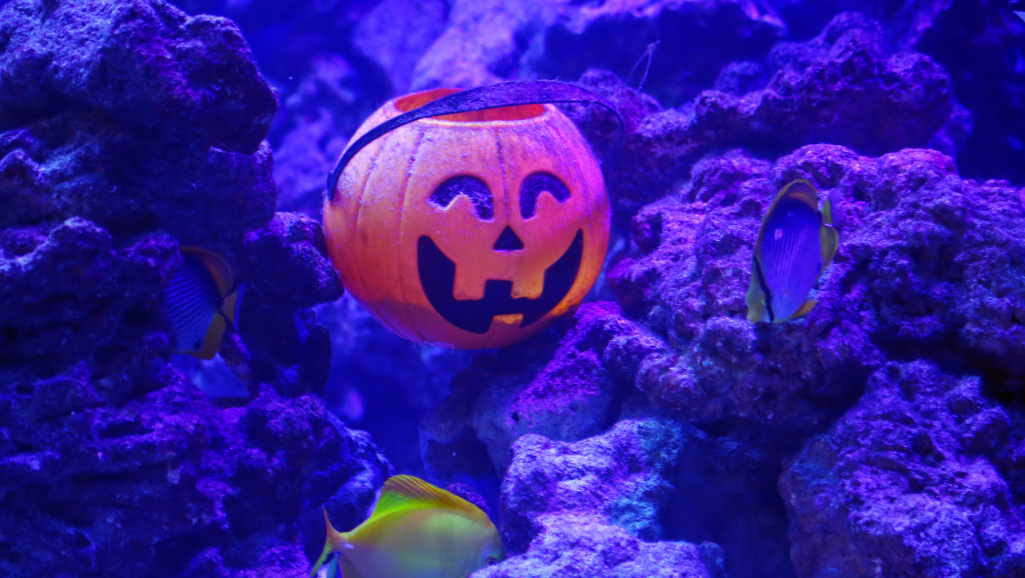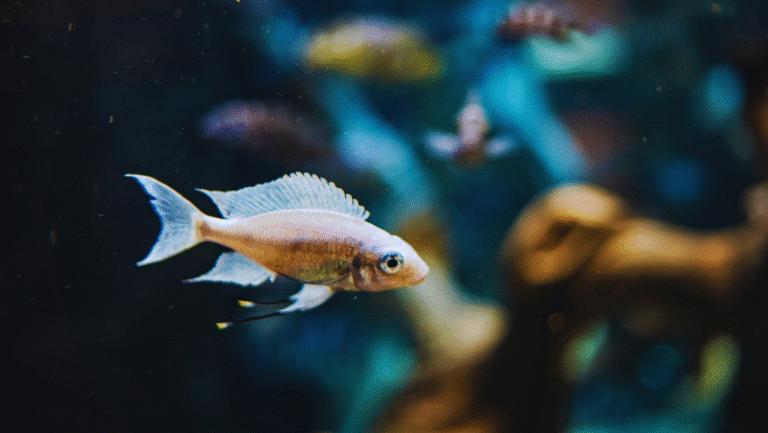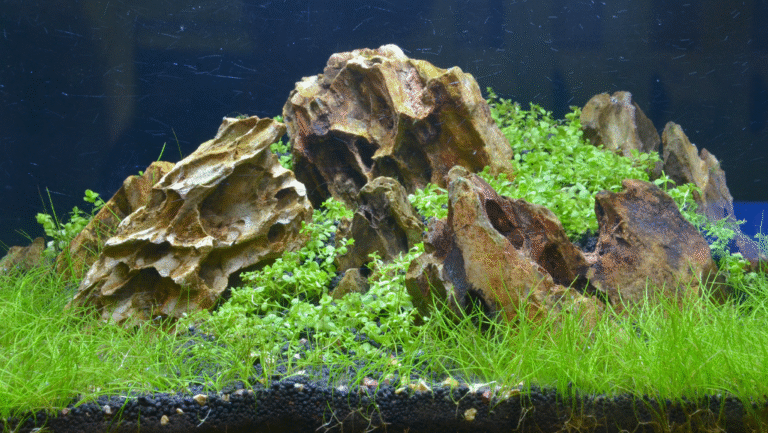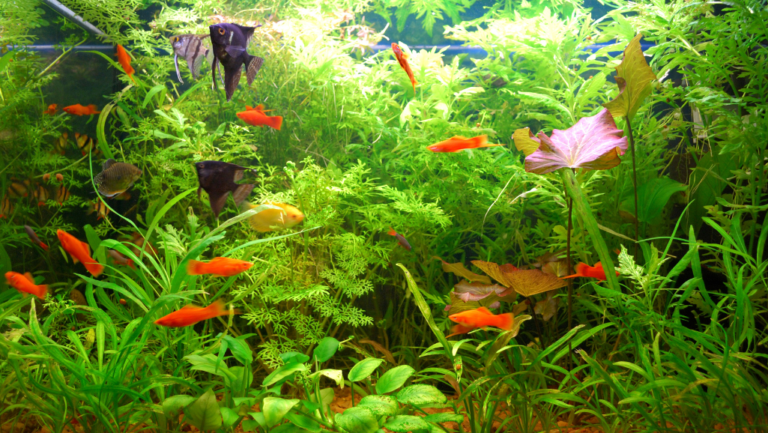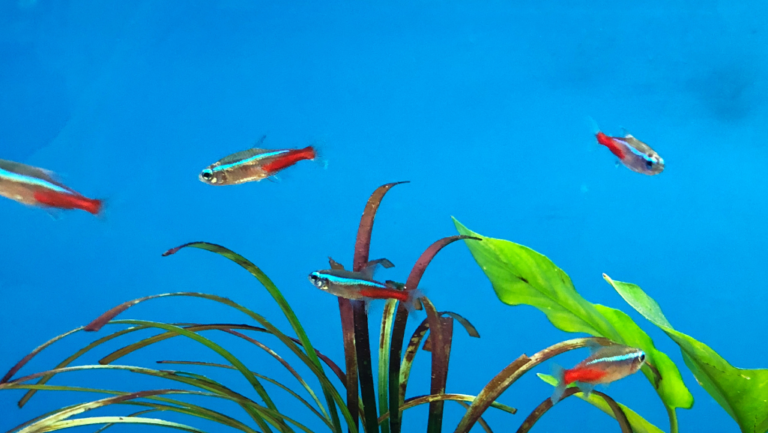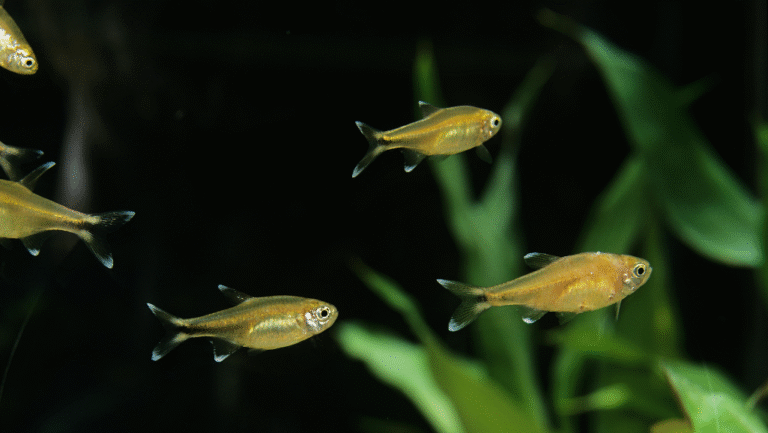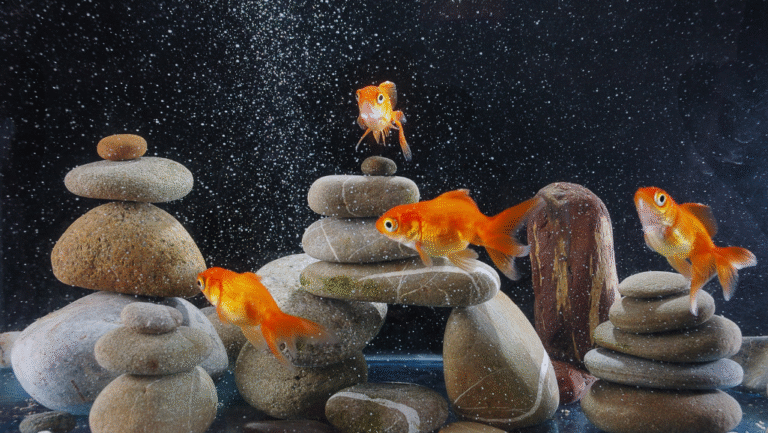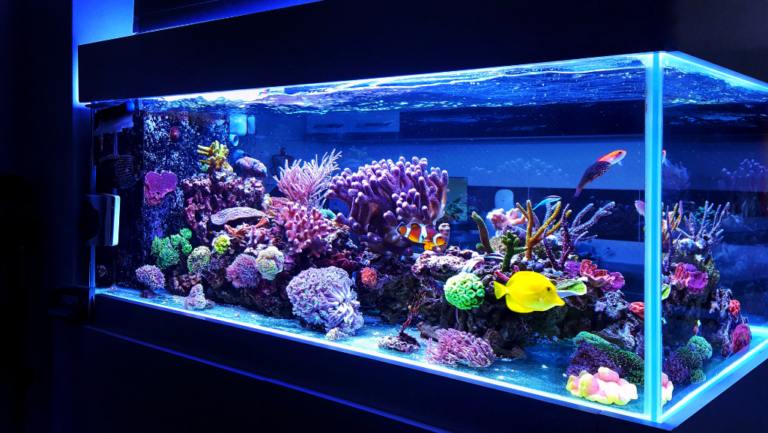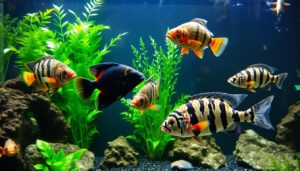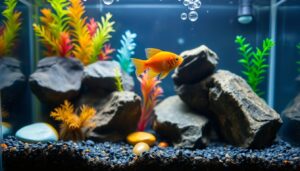Starting an aquarium is exciting and comes with big responsibilities. Speeding up aquarium cycling is key for those wanting a healthy home for their fish. A quick start cycling guide can cut down waiting time from weeks to days. This makes sure your tank is ready for new fish quickly and safely.
Aquarium cycling is about creating a good home for your fish. It involves growing beneficial bacteria. These bacteria turn bad stuff into something safe. API QUICK START™ helps by adding these bacteria early, starting the process fast. You’ll need tools like the API Master Test Kit to keep track.
To cycle your tank well, use API QUICK START™ during water changes and when adding new fish. This step is crucial for a quick and successful cycle. Are you ready to start your tank’s journey? Let’s dive into creating a thriving underwater world!
Key Takeaways
- how long to cycle a tank with quick start.
- Understanding how to effectively use API QUICK START™ to decrease cycling time.
- Importance of establishing a colony of beneficial bacteria for a healthy aquarium ecosystem.
- Necessity of employing the API Master Test Kit to ensure the progression of the nitrogen cycle.
- Utilizing partial water changes to regulate ammonia and nitrite levels during tank cycling.
- Exploring the benefits of fishless cycling with resources like DrTim’s Aquatics One & Only.
Understanding the Aquarium Nitrogen Cycle and Quick Start’s Role
Starting a successful aquarium means knowing the aquarium nitrogen cycle timeline. This process turns harmful waste into safe compounds for fish. Quick Start helps speed up this process, cutting down the fish tank cycling time frame.
Nitrogen cycling is key to a healthy aquarium. It changes ammonia from fish waste into safer nitrates. This process is delicate and needs careful management of tank elements.
The Basics of the Nitrogen Cycle in Fish Tanks
The aquarium nitrogen cycle timeline starts with ammonia in the tank. This can come from fish waste or added ammonia. Beneficial bacteria then convert ammonia into less harmful nitrates. But, growing these bacteria takes time.
Fish-In vs. Fishless Cycling: Pros and Cons
- Fish-In Cycling: This method starts with fish in the tank, using their waste for ammonia. It’s quicker but risks harming fish if not done right.
- Fishless Cycling: This safer method adds ammonia manually. It’s slower but keeps fish safe from toxins.
How Quick Start Accelerates the Cycling Process
Quick Start products speed up tank cycling by adding lots of beneficial bacteria. This cuts down the fish tank cycling time frame. They work with both fish-in and fishless methods, ensuring fast biological filtration. This keeps the water safe for fish by quickly removing toxins.
Choosing between cycling methods depends on the aquarist’s preference and fish availability. But, using Quick Start ensures a quick start to a balanced aquarium. This promotes a healthy ecosystem from the beginning.
Preparing Your Aquarium for Cycling with Quick Start
Before starting the cycling a fish tank fast process, it’s key to set up your aquarium right. This ensures your fish’s health and the cycle’s efficiency. A good start can cut down cycling time and make your tank a great home for fish.
Essential Aquarium Setup Steps Before Adding Quick Start
Setting up your tank is more than just filling it with water. Start by arranging the substrate and decorations. These not only look good but also give fish places to hide. Make sure the filter is working to keep the water moving and oxygenated.
It’s also crucial to treat the water with a dechlorinator, like API STRESS COAT™. This removes harmful chlorine and heavy metals from tap water.
After setting up and treating the tank, add Quick Start. This introduces beneficial bacteria needed for a fishless cycle quick start. These bacteria help turn harmful ammonia and nitrites into safer nitrates, making the cycle healthier and faster.
- Check the water temperature, ensuring it’s within the ideal range of 83°F to 87°F for optimal bacteria performance.
- Adjust the pH to between 7.0 to 7.8, suitable for most freshwater fish and effective cycling.
Monitoring Water Parameters for a Successful Cycle
After starting the cycle, it’s important to regularly test the water. Make sure ammonia doesn’t go over 3 ppm before it starts to drop. This shows the beneficial bacteria are growing.
During the cycle’s peak, ammonia levels might rise. If they get too high, do a 10% to 20% water change. Adding Quick Start after each change helps keep the bacteria going.
Carefully monitoring and adjusting water chemistry helps maintain the cycle’s progression and prevents toxic buildup detrimental to fish.
When the cycle is complete, you’ll see 0 ppm ammonia and nitrites, and nitrates below 40 ppm. This means it’s safe to add fish slowly to the tank.
For a deeper understanding of these steps, check out the guide on how to cycle a fish tank. It can help you get your tank ready for fish faster.
Step-by-Step Guide: How Long to Cycle a Tank with Quick Start
Starting a fast track aquarium cycling journey is exciting but can feel daunting. Using quick start bacteria for tank cycling can cut down waiting times. Here’s a quick guide to help you cycle your tank efficiently.
The first step to a healthy aquatic home is a balanced nitrogen cycle. This usually takes 2 to 6 weeks, depending on tank size, fish numbers, and filter types. Fishless cycle quick start products can make this time much shorter.
- First, set up your tank and make sure all equipment works. Also, dechlorinate the water properly.
- Then, add the Quick Start as directed. This introduces beneficial bacteria to start the cycle.
- For the first week, don’t add fish. This lets the bacteria grow and start converting ammonia to nitrites.
- Check your water every 3-4 days. Ammonia should be 0-0.25ppm, and nitrite should be 0ppm. Watch as nitrate levels go up to 5ppm-20ppm.
- If ammonia or nitrite levels go up, do a 30% water change. Add API STRESS COAT to protect fish and help the cycle.
- Keep adding API QUICK START during water changes, after adding fish, and weekly. This keeps nitrifying bacteria healthy.
- Keep watching until ammonia and nitrite levels are always 0ppm. This means the cycle is done, and your tank is ready for fish.
With careful monitoring and patience, fast tracking aquarium cycling with quick start bacteria lets you enjoy your underwater world sooner. Remember, good cycle management keeps your fish healthy and your ecosystem stable for the long term.
Maximizing the Efficiency of Quick Start in Cycling
For those starting a new aquarium, accelerated tank cycling methods can cut down waiting time. A quick start cycling guide helps by focusing on the best conditions for Quick Start bacteria.
Creating the right environment for Quick Start bacteria is key. It ensures bacteria grow fast and keeps the tank healthy and stable over time.
Optimal Water Conditions for Quick Start Bacteria
- A pH level consistently above 7 to ensure bacteria thrive.
- Water temperatures in the upper 70s Fahrenheit to promote bacterial activity.
- High levels of dissolved oxygen facilitated by robust water circulation and aeration, critical for bacterial respiration and growth.
- Avoidance of toxins that can inhibit bacterial development, such as heavy metals and chemicals typically found in tap water.
Importance of Dosing & Frequency during Cycling
Getting the right amount of Quick Start solution is crucial. It’s not just about adding bacteria but also keeping up with regular doses. This is important after changes like water changes or adding fish.
- Follow the manufacturer’s guidelines for initial and maintenance dosing to establish and sustain a robust bacterial colony.
- Re-dose after any significant change to the aquarium, such as water changes or cleaning, to replenish any bacteria that might have been lost.
- Monitor ammonia, nitrite, and nitrate levels regularly to ensure the cycling process is progressing as expected and adjust dosing if necessary.
By carefully managing these factors, aquarium lovers can set up their tanks faster. This not only saves time but also makes the tank healthier and more stable from the start.
Case Studies and Success Stories: Fast-Tracked Tank Cycling
Exploring quick start cycling guide shows real-world success. These stories prove fast tracking aquarium cycling can cut down fish tank cycling time frame significantly. They highlight the impact on both fresh and saltwater aquariums.
Dr. Tim’s “One & Only” Bacteria was first used in heavily stocked tanks. It quickly reduced Ammonia levels to zero in under ten days. This shows the power of these bacteria cultures.
After water changes, Nitrate levels also dropped. This proves fast-tracking methods can quickly stabilize water parameters.
Real-Life Examples of Quick Start’s Impact on Cycling Times
Quick start cycling has changed the game for many. It works in both novice and expert marine biotopes. For example, a marine tank with lots of fish became stable in just weeks.
In freshwater tanks, users have cycled their tanks in weeks, not months. They used the right amount of starter bacteria and kept a close eye on things.
For more on creating a great environment for aquarium fish, check out this guide on colorful and healthy aquarium.
Adjusting Cycling Strategies for Heavily Stocked Tanks
A 125-gallon tank with lots of fish was a success story. It used targeted bacteria and water changes to quickly fix ammonia and nitrite levels. The trick was to adjust the bacteria amount based on the tank’s load.
This mix of advanced bacteria, careful monitoring, and smart water management can shorten the fish tank cycling time frame a lot. By using these quick start methods, aquarium lovers can keep their fish healthy and enjoy their tanks sooner.
Conclusion
The journey of quick start bacteria for tank cycling has been enlightening. It shows how careful and patient steps can quickly set up a healthy aquarium. We’ve explored the nitrogen cycle, the role of Quick Start in growing good bacteria, and how long it takes to cycle a tank with it.
This journey from a toxic environment to a thriving one usually takes 2-6 weeks. This shows how Quick Start can make this process faster. It’s a remarkable change that shows the power of Quick Start.
During tank cycling, time and attention are key. We watch as ammonia turns into nitrite and then drops to almost nothing. This careful watching is what makes a tank thrive. Live plants add to this, helping to clean the water and making the tank more beautiful.
For more on tank cycling, check out this article. It has more details on how long it takes and different methods.
This guide helps both new and experienced fish-keepers. It shows that with Quick Start and careful watching, a cycled tank is just weeks away. We’ve looked at different ways to balance fish and plants and prevent algae. This ensures your tank journey is filled with success and happiness.
Through case studies, we’ve shown how quick start bacteria for tank cycling can make the waiting time shorter. The true beauty of aquascaping is not just the fish or plants. It’s the tiny bacteria that make the tank alive and thriving.
